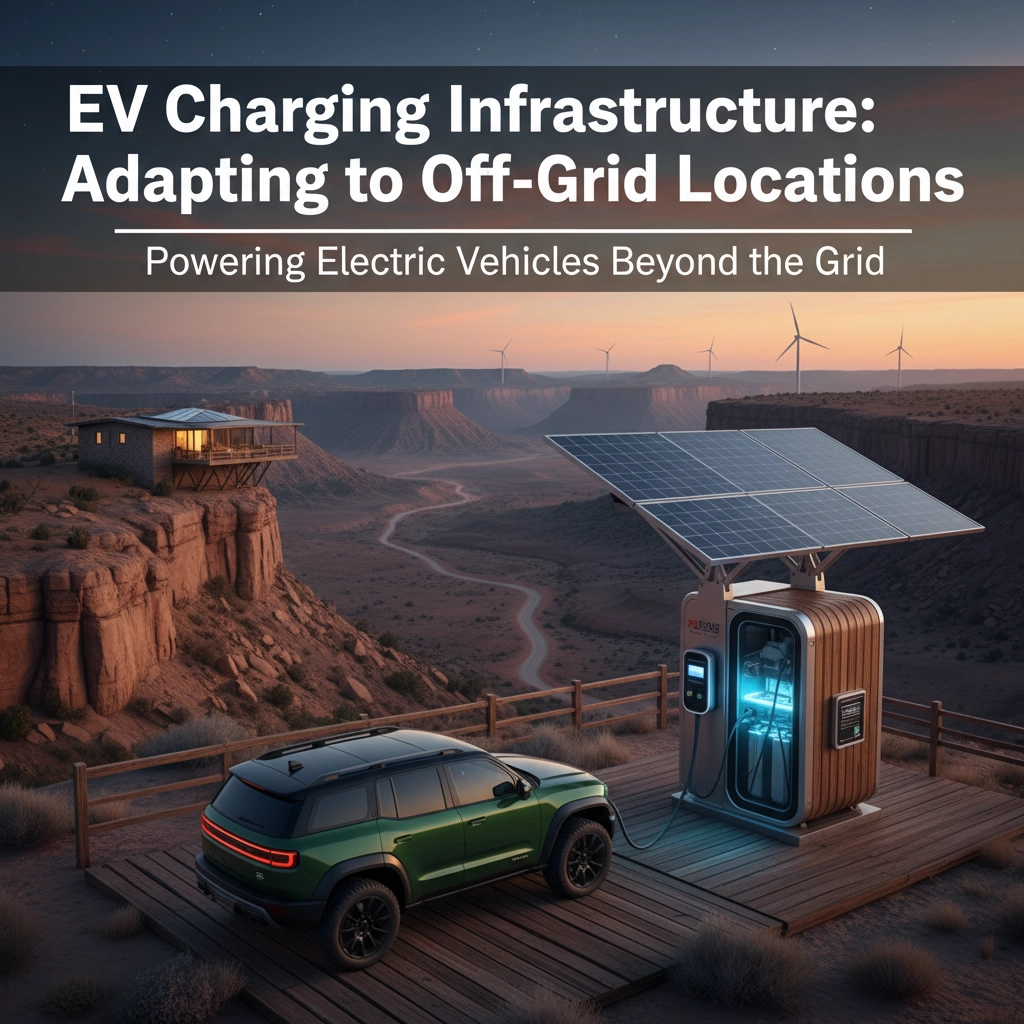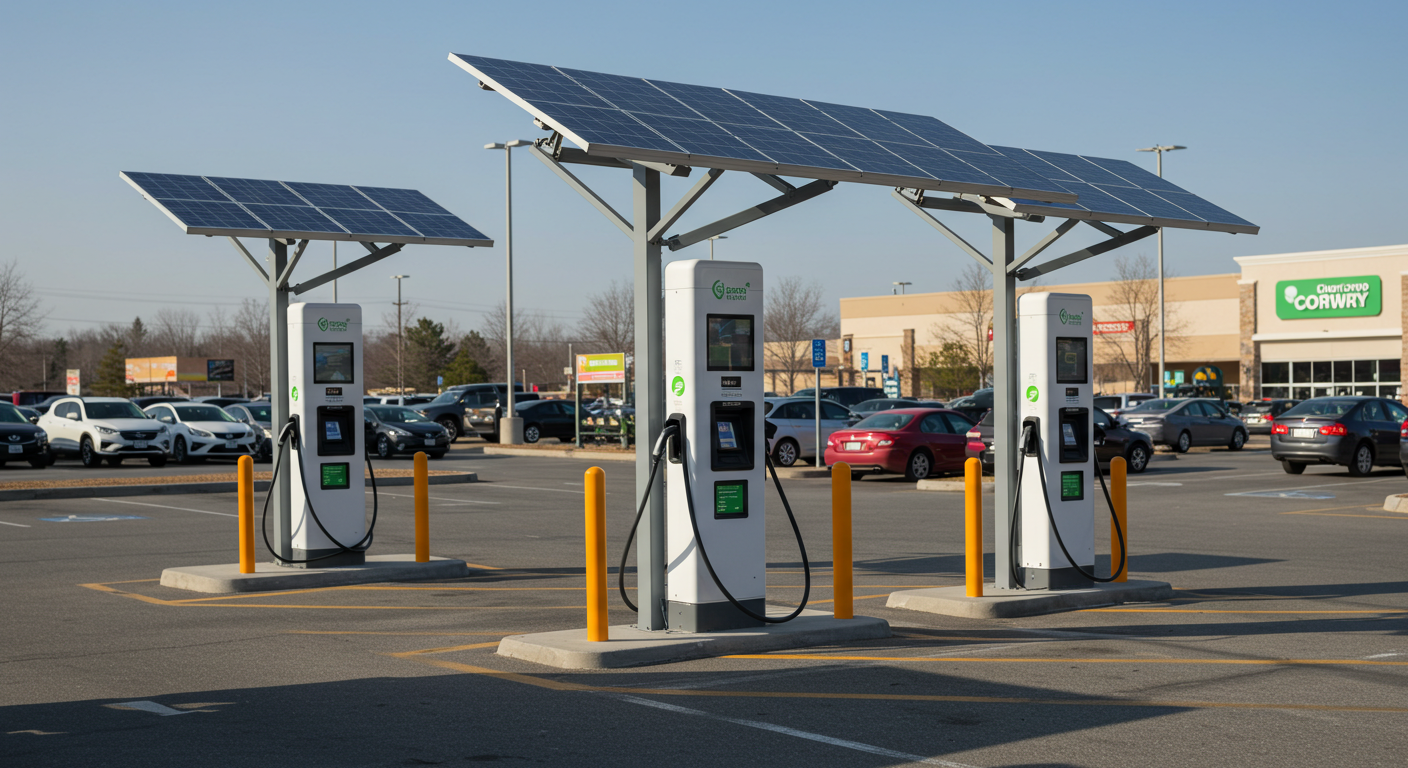Municipal facilities and post offices across the country face a unique challenge: how do you electrify your fleet when you're located miles from reliable grid infrastructure? You're not alone in this struggle. Many government facilities, especially those serving rural communities, find themselves caught between environmental mandates and practical limitations.
The good news? Off-grid EV charging solutions are transforming how municipal operations approach fleet electrification. You can now deploy charging infrastructure without waiting years for grid connections or spending massive amounts on utility upgrades.
Why Off-Grid Solutions Matter for Municipal Sites
Your municipal operations can't afford to wait for traditional grid infrastructure to catch up with electrification needs. Grid connections often take 12 to 36 months or longer, with some locations experiencing delays of up to four years. During this time, your sustainability goals remain on hold while diesel vehicles continue burning fuel and generating emissions.
Post offices face particularly acute challenges. Many rural postal facilities operate in locations where grid capacity is limited or entirely unavailable. Yet these sites must maintain reliable service while meeting federal sustainability requirements. Off-grid charging systems eliminate this bottleneck entirely.
You gain immediate benefits when you choose off-grid solutions. Your facility becomes energy independent, avoiding demand charges and complex utility negotiations. More importantly, you can begin fleet electrification immediately, meeting sustainability targets without compromising operational reliability.
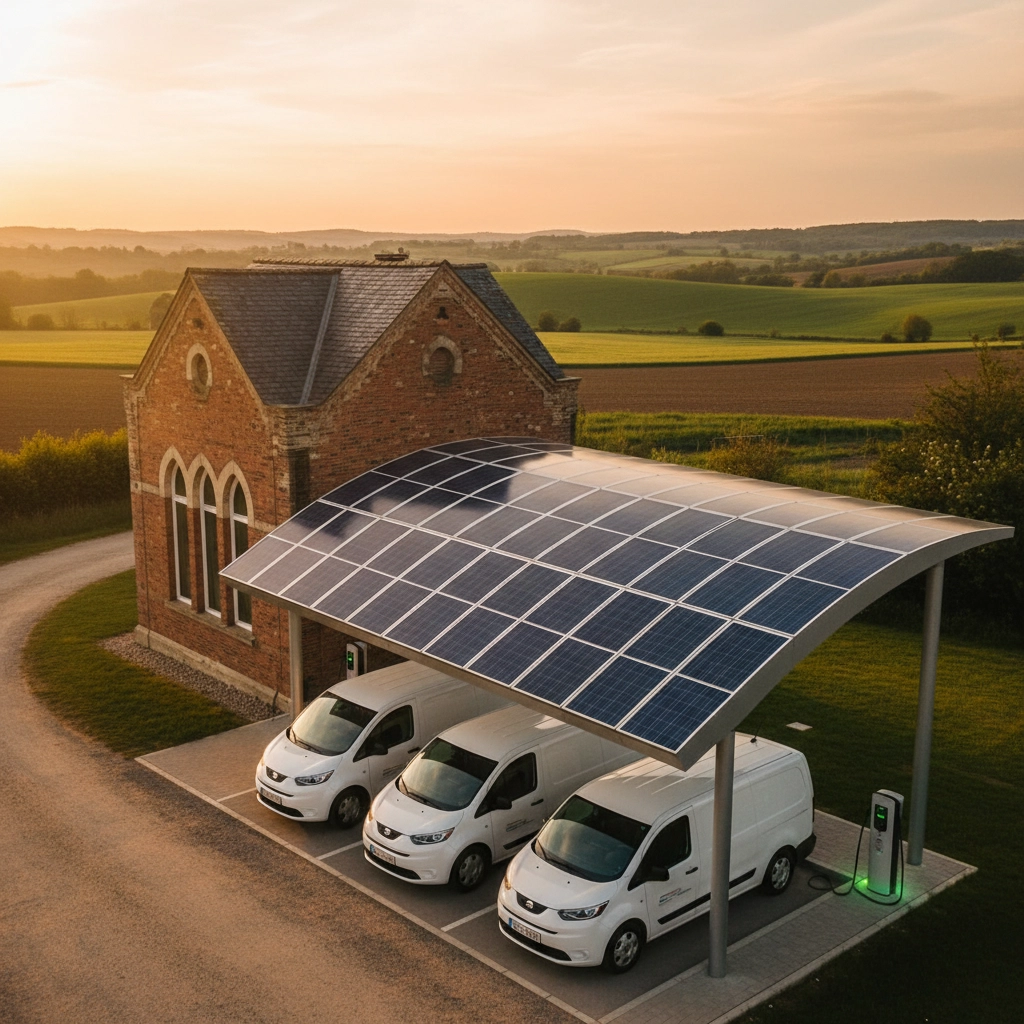
Essential Components for Municipal Charging Systems
Your off-grid charging station functions as a self-contained power plant designed specifically for your operational needs. Understanding the core components helps you make informed decisions about system sizing and configuration.
Solar Panel Arrays form the foundation of your system. Modern photovoltaic panels exceed 26% efficiency, meaning you capture more energy from available sunlight. Size your array based on your fleet's daily energy consumption and local solar irradiance patterns. Municipal facilities typically require arrays ranging from 25kW to 100kW depending on fleet size.
Battery Energy Storage Systems ensure charging availability regardless of weather conditions. Lithium-ion batteries provide the reliability your operations demand, with many systems incorporating second-life EV batteries to reduce costs. Plan for at least two days of backup power to maintain service during extended cloudy periods.
Power Electronics convert and manage energy flow throughout your system. Charge controllers protect your batteries from overcharging while inverters convert stored DC power to the AC current required by most EV chargers. Smart inverters also provide system monitoring and remote diagnostics capabilities.
Charging Hardware connects directly to your vehicles. Choose Level 2 chargers for overnight depot charging or DC fast chargers if you need rapid turnaround times. Municipal fleets often benefit from Level 2 systems that fully charge vehicles during standard parking periods.
Implementation Strategies for Government Facilities
Start your off-grid charging project with a comprehensive energy audit. Document your current fleet's fuel consumption, daily mileage patterns, and parking schedules. This data helps you right-size your system and avoid over-investment in unnecessary capacity.
Site Assessment comes next. Evaluate your facility's solar exposure, identifying potential shading issues from buildings, trees, or other structures. South-facing areas with minimal shading provide optimal energy generation. Consider seasonal sun angle variations that affect panel performance throughout the year.
Permitting and Approvals require careful attention in government applications. Coordinate with your facilities management team early in the planning process. Many municipal installations qualify for streamlined permitting processes, but budget additional time for internal approvals and compliance reviews.
Phased Implementation often works best for larger municipal fleets. Begin with a pilot system serving 2-3 vehicles, then expand based on operational experience and budget availability. This approach minimizes risk while building internal expertise with off-grid technologies.
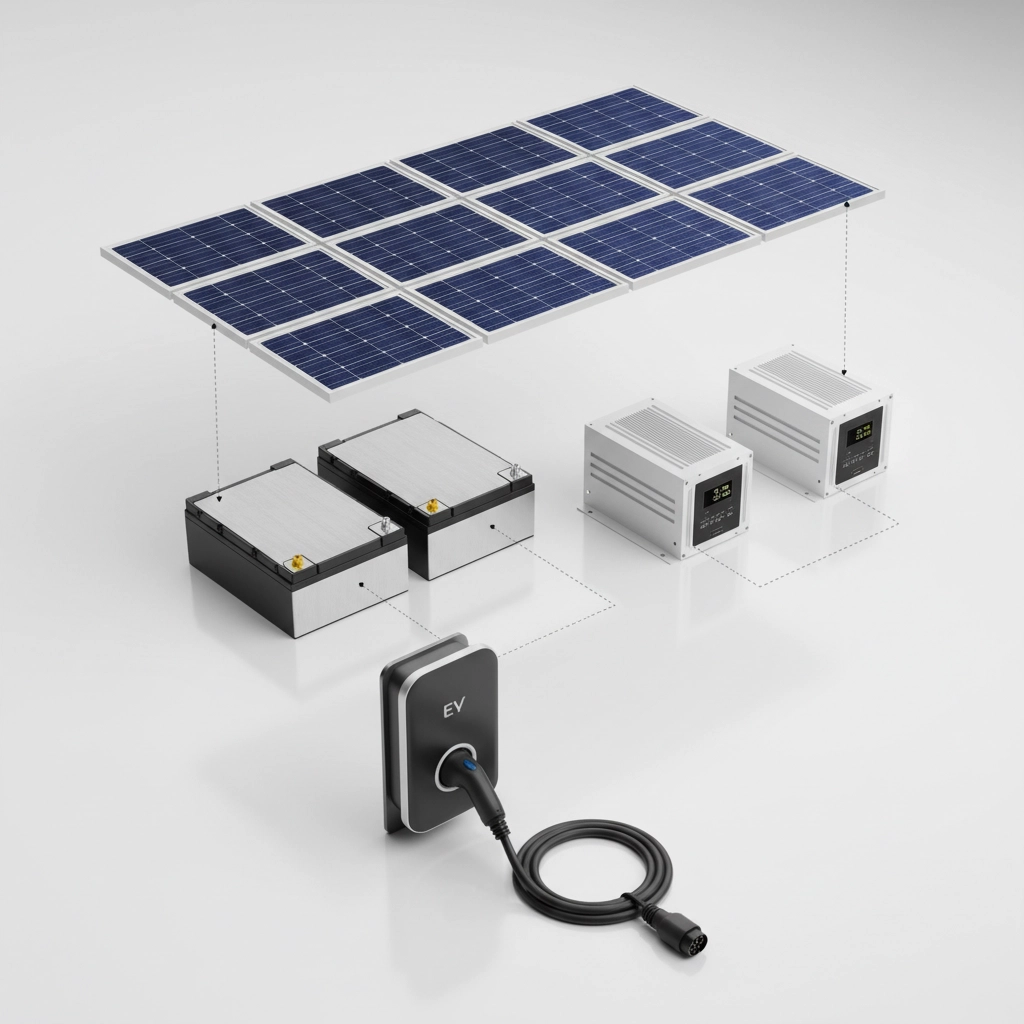
Cost Considerations and Funding Opportunities
Your initial investment in off-grid charging infrastructure typically ranges from $15,000 to $50,000 per charging port, depending on system size and complexity. While this seems substantial, compare it against the total cost of grid connection delays, including continued fuel expenses and missed sustainability targets.
Federal and State Incentives significantly improve project economics. The federal solar Investment Tax Credit covers 30% of solar installation costs through 2032. Many states offer additional rebates for government EV infrastructure projects. Research local utility programs that may provide additional funding for off-grid installations.
Operating Cost Savings accumulate quickly once your system is operational. You eliminate fuel purchases, reduce maintenance expenses, and avoid utility demand charges. Many municipal installations achieve payback periods of 5-7 years when accounting for all operational savings.
Financing Options include municipal bonds, equipment leasing, and power purchase agreements (PPAs). PPAs allow you to install systems with minimal upfront costs, paying only for the energy produced. This approach helps you begin electrification immediately while preserving capital for other priorities.
Optimizing Performance for Municipal Operations
Your off-grid system requires ongoing attention to maintain peak performance. Establish monitoring protocols that track energy production, consumption patterns, and system health indicators. Modern systems provide remote monitoring capabilities that alert you to potential issues before they affect operations.
Energy Management becomes crucial during peak usage periods. Program your charging schedules to align with solar production patterns, prioritizing vehicle charging during sunny afternoon hours. Smart charging systems automatically adjust power distribution based on available energy and vehicle priority levels.
Maintenance Protocols ensure long-term reliability. Schedule quarterly inspections of solar panels, checking for debris accumulation or physical damage. Battery systems require annual capacity testing and connection inspections. Keep spare parts inventory for critical components like fuses and charge controllers.
Weather Contingency Planning prepares you for extended low-solar periods. Develop protocols for prioritizing vehicle charging when energy storage runs low. Consider backup power sources like generators for critical operations during extreme weather events.
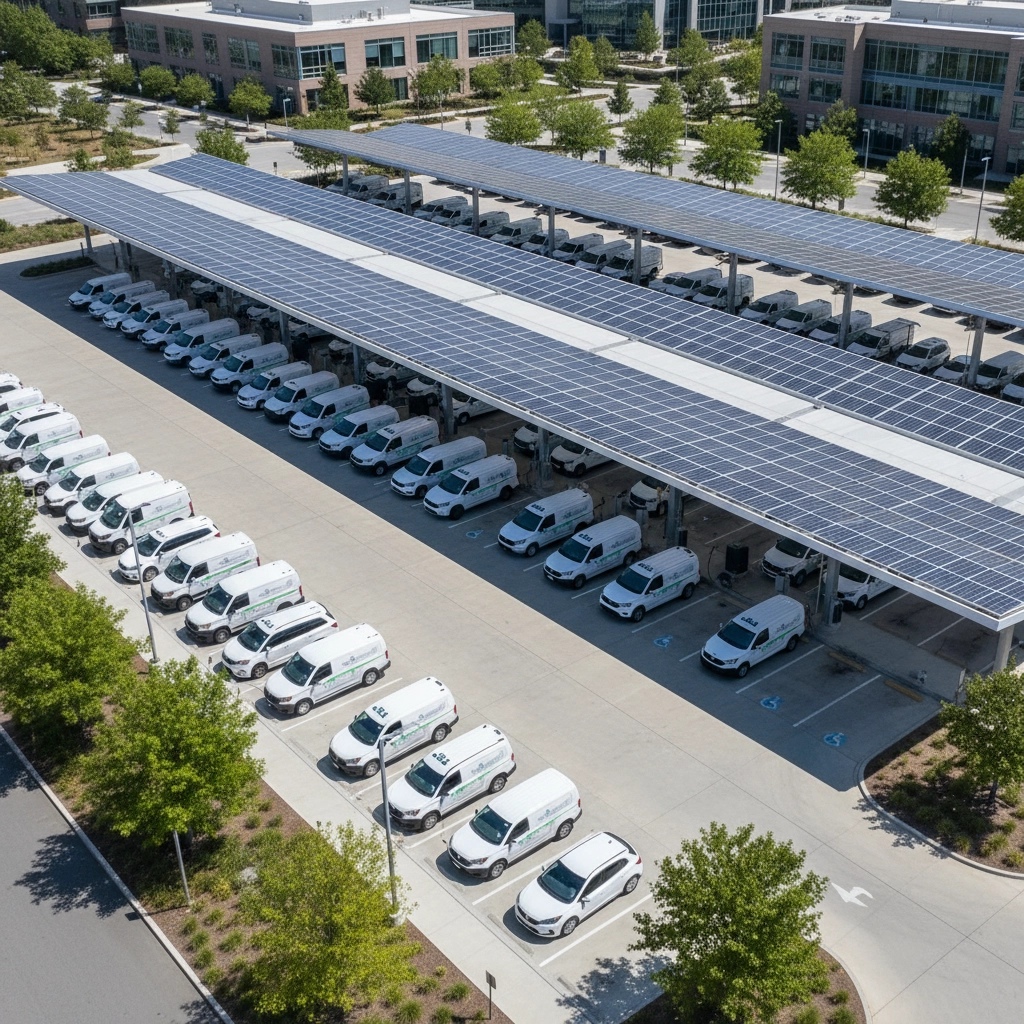
Scaling Your Municipal Charging Network
Begin planning for system expansion before your initial installation is complete. Design your electrical infrastructure with future growth in mind, installing conduits and panel capacity that can accommodate additional charging ports without major modifications.
Fleet Electrification Scheduling should align with natural vehicle replacement cycles. Replace the oldest, least efficient vehicles first to maximize fuel savings and emissions reductions. Coordinate with your procurement department to ensure new electric vehicles are compatible with your charging infrastructure.
Multi-Site Coordination becomes important as you expand across multiple municipal facilities. Standardize equipment selections and maintenance protocols to reduce training requirements and spare parts inventory. Consider centralized monitoring systems that provide oversight across all installations.
Community Engagement opportunities arise as your charging network expands. Many municipal installations can provide public charging during off-duty hours, generating revenue while serving community needs. This dual-use approach improves project economics while supporting broader electrification goals.
Your journey toward fleet electrification doesn't have to wait for perfect grid conditions. Off-grid charging solutions provide the energy independence and operational flexibility your municipal operations need today. Start with a pilot project that demonstrates feasibility, then scale your network as experience and budget allow.
The technology exists to power your electric fleet regardless of grid limitations. Your community's sustainable future begins with taking that first step toward energy independence. Consider reaching out to experienced project developers who can help you navigate the technical and financial aspects of off-grid charging implementation.
For more information about sustainable infrastructure solutions, visit Bi State Developers Inc to explore how off-grid technologies can transform your municipal operations.
